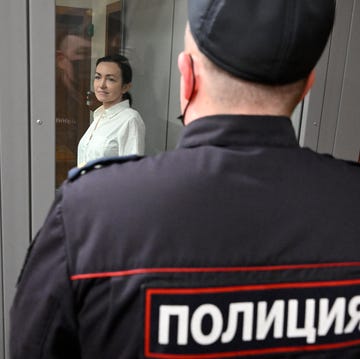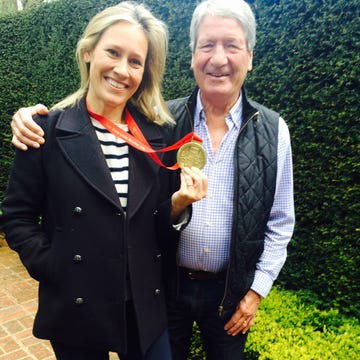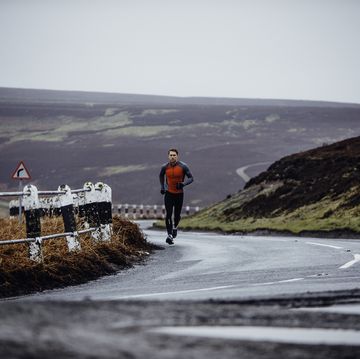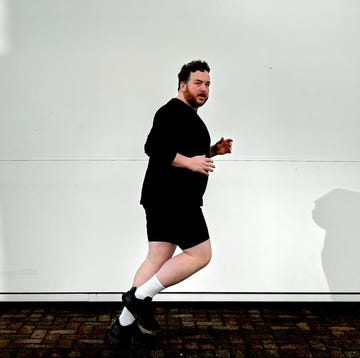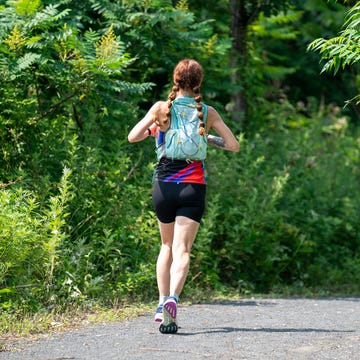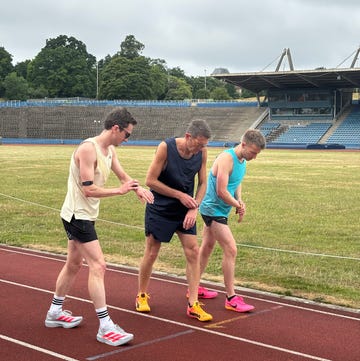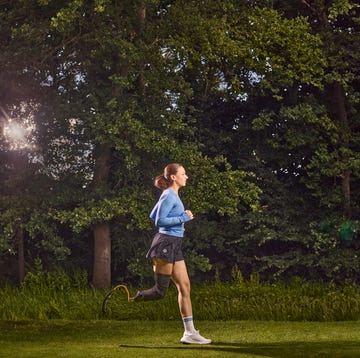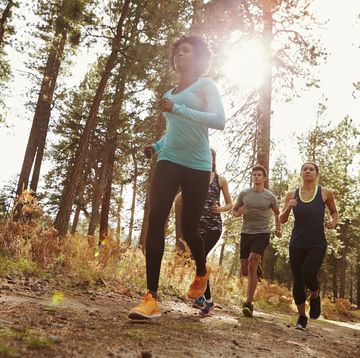I am lying in an MRI scanner in London. For an hour and a half, I’m not allowed to move. The machine whirs as images are taken of every part of my knees, hips and core muscles around my pelvis. ‘We are slicing you up like salami with our images,’ I am told. I’ve chosen to come here in the name of research. But ever since I said yes six weeks ago, I’ve been stricken by fear, convinced that I’m going to be told that running 1,500 miles a year in my fifties is damaging my ageing joints. ‘What about your knees?’ is the question runners get asked all the time. Since I took up running more than a decade ago, my knees have always felt fine. I’ve had my fair share of injuries. But my bones and joints have always felt like they’re coping with the load. Recently, though, a strange crackling noise has begun emanating from my knees when I go upstairs. I’ve convinced myself it’s the running. Lying inside this machine, I’m bracing myself for bad news.
The man who is about to determine my fate with his scans is Alister Hart, an orthopaedic surgeon who, for the past six years, has been carrying out pioneering research into what running actually does to your hips and knees. His interest was sparked after he ran his first marathon a decade ago at the age of 42. For days afterwards, he limped around the hospital where he works. ‘It really got me thinking about what it was doing to my body,’ he says.
And so he began the largest and most detailed study of the knees of middle-aged marathon runners to date. He did MRI scans of 164 knees belonging to 82 runners, all in their forties, all first-time marathon runners with no known injuries. He wasn’t sure what he would find. ‘There was a risk we could have killed off running,’ he says, smiling. The results surprised him. The runners were scanned before and after a four-month training plan that culminated in the London Marathon. ‘It looks like running, even up to marathon level, is actually good for the bones. It strengthens them. And this, in turn, is good for the cartilage; we really didn’t expect that at all.’
What everyone's reading
He explains that osteoarthritis is essentially the thinning or loss of the cartilage between our bones. ‘If the bones aren’t supporting the cartilage, it gets damaged,’ he says. ‘That’s one of the things that causes arthritis in the long term.’ His research has since moved on to
hips, and he has scanned more than 1,000 marathon and ultramarathon runners. ‘It’s a common fear that running will damage the joints. But it now looks like the opposite is true.’ The key, he thinks, is keeping your muscles strong. ‘That’s what we’re trying to prove now in our research.’
The machine stops whirring and a nurse comes in to rescue me from the scanner. Next door, indecipherable images of my body are up on screens. I closely watch the faces in the room. Are my running days nearing the end? ‘So, good looking knees! Pretty perfect, in fact,’ says a doctor. ‘We scanned your muscles, too – let’s say more fillet steak than rib-eye,’
he says, laughing. I walk out of the hospital giddy with relief.
That scan has put a big spring in my step. I’ve signed up for more races, safe now in the knowledge that my joints are still more than capable of carrying me along.
Sophie Raworth is a BBC broadcaster. She has completed all six marathon majors, as well as the Marathon des Sables and the OCC. Follow her on Instagram: @raworthontherun
Read Sophie's previous columns:


